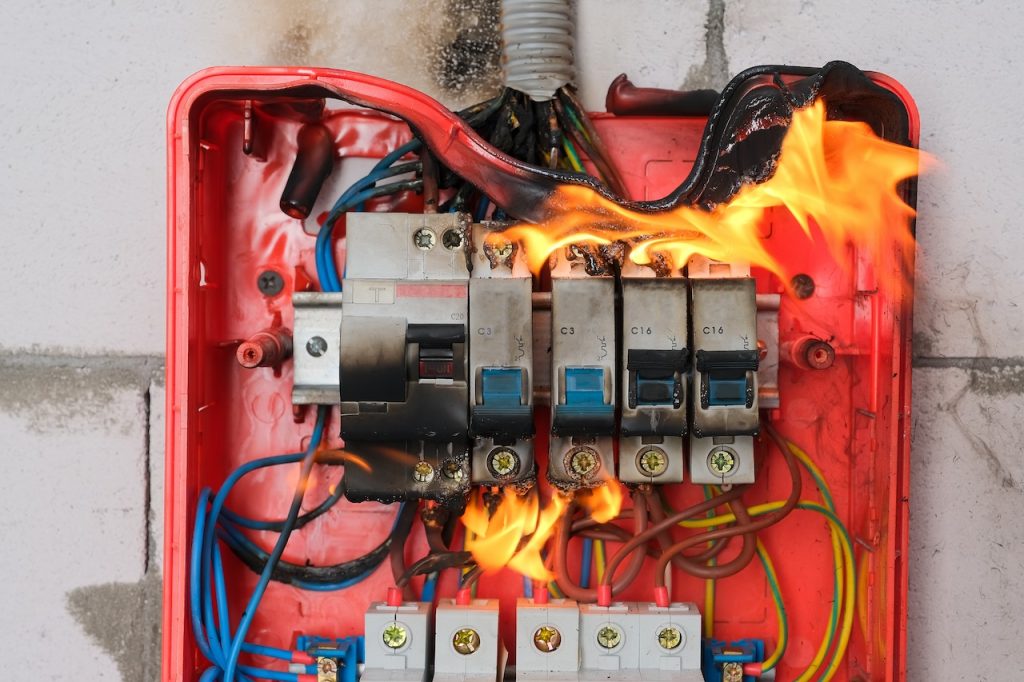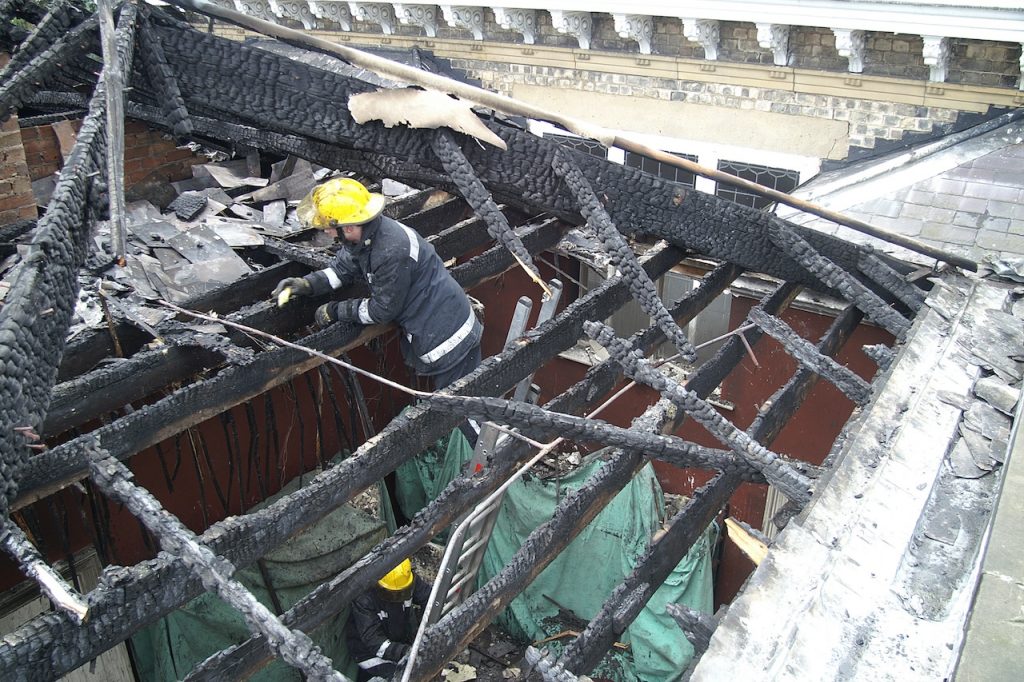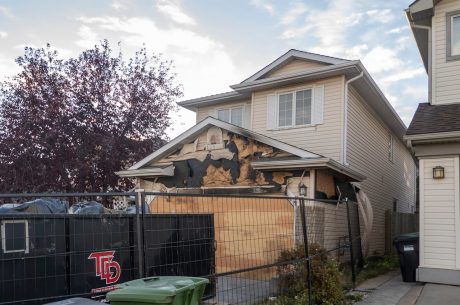Table of Contents
When a fire suppression system activates, it saves property and lives—but its discharge can leave behind significant damage. Whether it’s water, foam, or chemical residue, each type of agent requires specialized cleanup to prevent corrosion, contamination, or mold growth. Knowing what to do immediately after a fire suppression system discharge can make the difference between a quick recovery and costly long-term repairs.
In this expert guide, PuroClean Emergency Restoration Services of Sterling, VA explains what happens when a system discharges, the risks it poses, and the best cleanup and restoration steps to get your home or business back to normal safely and efficiently.
What Is Fire Suppression System Discharge?
A fire suppression system discharge occurs when an automatic or manual fire protection system activates to extinguish a fire. These systems are designed to release an extinguishing agent directly into the affected area to control flames before they spread.
Common Types of Fire Suppression Systems
- Water-based sprinklers: Standard in most homes and offices, these can release hundreds of gallons of water in minutes, often leading to flooding.
- Foam-based systems: Common in commercial kitchens and industrial facilities; effective on grease and chemical fires but leave sticky residue.
- Dry chemical or powder systems: Used in industrial settings; can corrode surfaces and electronics if not cleaned properly.
- Gas or clean agent systems: Found in server rooms or data centers; minimize residue but still require post-discharge ventilation and inspection.
Each type has different cleanup requirements, which is why professional restoration is crucial to prevent hidden damage.

Electrical fires require class C extinguishers.
The Challenges of Fire Suppression System Discharge Cleanup
Cleaning up after a system discharge involves more than mopping floors or wiping surfaces. Depending on the agent used, property owners may face multiple hazards:
- Water and Moisture Damage. Sprinkler systems can release thousands of gallons of water, flooding floors, walls, and ceilings. Prolonged exposure can lead to structural damage, wood warping, and mold growth within 24–48 hours.
- Chemical and Foam Residue. Chemical agents used in fire suppression—such as potassium bicarbonate or monoammonium phosphate—can be corrosive if left uncleaned. Foam systems may leave sticky films that attract dust and compromise air quality.
- Electrical Hazards. Water or foam can damage electrical panels, outlets, or wiring. Attempting to power up equipment prematurely can cause short circuits or even reignite a fire.
- Odor and Air Quality Issues. Fires and extinguishing agents can leave lingering chemical odors. Without proper ventilation and deodorization, these smells can persist for weeks and irritate respiratory systems.
Step-by-Step: How to Clean Up After a Fire Suppression System Discharge
Cleaning up after a fire suppression system discharge requires a careful and methodical process to ensure safety, prevent secondary damage, and restore full functionality to the affected property. Each step plays a crucial role in protecting your structure, air quality, and health while minimizing long-term repair costs.
Step 1: Assess the Damage
The first step is to conduct a thorough damage assessment. Identify which areas of the property were affected by the fire, water, or chemical agents. Examine walls, ceilings, flooring, furniture, and electronic equipment for visible damage or residue.
It’s also important to check for hidden moisture or residue behind walls and under flooring, which can cause mold growth or corrosion later on. For Sterling, VA property owners, scheduling a professional inspection with PuroClean Emergency Restoration Services ensures that advanced tools such as moisture meters and infrared imaging are used to detect damage not visible to the naked eye. This comprehensive assessment forms the foundation for an effective cleanup and restoration plan.
Step 2: Remove Standing Water or Residue
If a water-based suppression system was activated, begin by removing any standing water immediately. Water extraction using professional pumps or wet vacuums helps prevent further structural damage and reduces the risk of mold growth.
In cases where foam or dry chemical agents were discharged, the cleanup process becomes more specialized. These substances should be carefully vacuumed or wiped away using protective gloves and masks to prevent skin or respiratory irritation.
The sooner residues are removed, the less chance they have to stain surfaces or corrode metals. Prompt removal also helps restore safe air quality inside the property.
Step 3: Clean and Neutralize Surfaces
Once visible residue or water has been removed, focus on cleaning and neutralizing affected surfaces. Foam and chemical suppression agents can leave behind alkaline or acidic residues that may damage finishes or react with other materials.
Using mild, manufacturer-approved cleaning solutions helps neutralize these residues safely without causing further harm. For areas impacted by water, apply antimicrobial or disinfectant solutions to inhibit bacterial and mold growth.
It’s essential to avoid using strong or untested chemicals, as they can react unpredictably with suppression agents and worsen surface damage. Thorough, gentle cleaning ensures that your property is safe and ready for drying and restoration.
Step 4: Dry and Dehumidify
Drying is one of the most critical steps in the cleanup process. Even small amounts of lingering moisture can lead to mold growth within 24–48 hours. Using industrial-grade air movers, fans, and dehumidifiers ensures that all moisture is eliminated from floors, walls, and furniture.
In Sterling, VA’s humid climate, proper drying is especially important to prevent long-term structural deterioration and indoor air quality issues. Professional restoration teams monitor humidity levels throughout the process to ensure the space remains completely dry and stable. Once this stage is complete, the property can safely move to electrical inspection and repair.
Step 5: Inspect Electrical Systems
Electrical systems are particularly vulnerable after a fire suppression system discharge, especially when water or foam agents have been used. Before restoring power, all electrical panels, outlets, lighting, and connected equipment should be inspected by a certified electrician.
Water intrusion or chemical corrosion can create hidden risks, such as short circuits or fire hazards, if systems are reactivated too soon. Professional inspection ensures that the property is safe for reoccupation and that no wiring or circuitry has been compromised during the discharge or cleanup process.
Step 6: Deodorize and Sanitize
Even after thorough cleaning and drying, odors from smoke, chemicals, or moisture can linger. Deodorizing and sanitizing the space is crucial to fully restoring comfort and air quality. Restoration professionals often use HEPA air scrubbers, ozone generators, or hydroxyl machines to neutralize odors and remove airborne contaminants.
These methods also help eliminate microscopic particles left behind by suppression agents. In addition, surfaces are sanitized again to ensure a hygienic environment, reducing the risk of mold spores, bacteria, or chemical residues affecting indoor air. The result is a clean, safe, and odor-free property ready for restoration.
Step 7: Restore and Rebuild
The final step involves repairing and rebuilding any areas damaged by the fire or suppression discharge. This may include replacing drywall, insulation, flooring, or ceiling materials that sustained water, chemical, or heat damage. If mold, corrosion, or structural issues have been identified during cleanup, remediation work is completed before reconstruction begins.
PuroClean Emergency Restoration Services in Sterling, VA provides complete restoration services, from structural repairs to cosmetic finishing, ensuring the property is returned to its pre-loss condition. Once this stage is finished, your home or business is safe, functional, and ready to resume normal operations.

Professional restoration is your best option.
Conclusion
A fire suppression system discharge can save your property—but the aftermath requires professional attention to prevent further damage. Whether it’s water, foam, or chemical residue, prompt cleanup ensures your property remains safe, dry, and odor-free.
For homeowners and businesses in Sterling, VA, PuroClean Emergency Restoration Services is available 24/7 to restore your property to its pre-loss condition. Our certified experts handle every step with care, safety, and efficiency.
Call (703) 579-8912 or visit our website to request immediate assistance today.
FAQ: Fire Suppression System Discharge
Q1: What should I do immediately after a fire suppression system discharge?
Evacuate, turn off power if safe, and call professionals to assess the damage and begin cleanup.
Q2: Are chemical fire suppression agents toxic?
Some can be mildly irritating but are generally non-toxic. However, residues must be cleaned promptly to prevent corrosion and health risks.
Q3: Can water from sprinklers cause mold?
Yes. Mold can begin forming within 24–48 hours after water exposure if drying isn’t handled quickly.
Q4: How long does cleanup take?
Minor discharges may be resolved in a few days, while larger incidents involving chemical or water damage may take a week or more.
Q5: Does insurance cover cleanup and restoration?
Most property insurance policies cover damage from fire suppression systems. PuroClean can work directly with your insurer to streamline the claims process.
Summary
- A fire suppression system discharge can cause water, chemical, and electrical damage.
- Act fast to remove moisture, residue, and odors.
- Professional cleanup prevents corrosion, mold, and air quality issues.
- PuroClean of Sterling, VA offers 24/7 certified restoration services.
- Quick response minimizes downtime and long-term repair costs.
You can also read:



